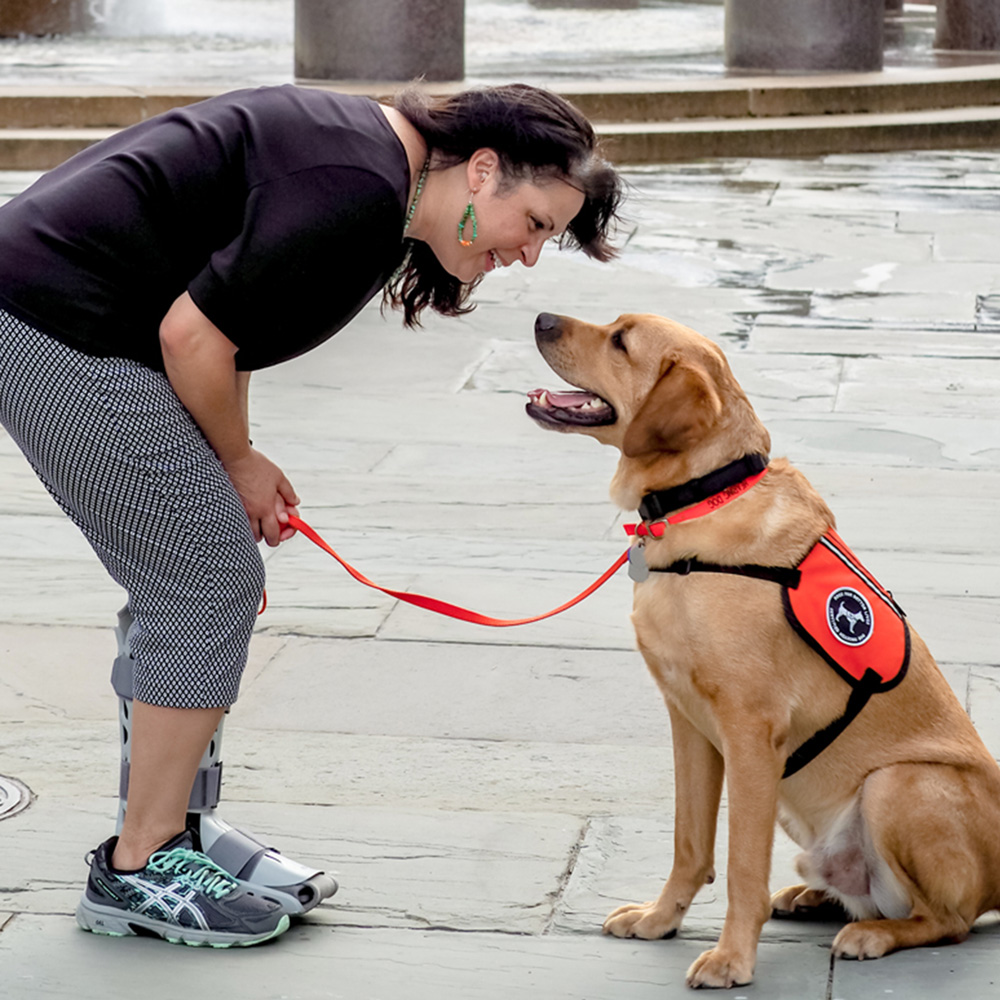Warm summertime weather and long walks might leave you asking yourself lately, “Why is my dog panting?”
Dogs don’t sweat the way we humans do, and instead of cooling down through evaporating sweat, your four-legged friend pants instead. You’ll find dog panting is normal if you live in a particularly warm climate, or if Rover exerted himself during play or exercise. But if you’ve noticed your pup panting more than usual, they could be trying to tell you something. With the hottest days of summer upon us, it’s a great time to also ask yourself: “Is it a healthy panting, or is my pup way too hot?”
How hot is too hot?
Most dogs are intolerant of too much heat, and are very susceptible to heat stress, or even heat stroke. Since they can’t use verbal cues to let you know when they need your help (“I’m boiling, here!”), it’s important to be aware of the signs that your pup is too hot.
If your furry pal has transitioned from a warm to cool environment more than ten minutes ago and is still excessively panting, it could be a sign that they are suffering from heat stress. Check in with yourself — if you’ve mentally noted, “Wow, why is my dog panting so much?” then their panting could be considered excessive.
Panting isn’t the only tell-tale sign your pet is suffering. In the warmer weather, pay special attention if your pet has dry gums that become pale or bright red, or is experiencing increased salivation, diarrhea, vomiting, erratic or rapid pulse, or seems to be suffering from weakness or confusion. These are all accompanying signs of heat stress in your pet, and should be treated immediately.
In order to avoid these symptoms, be conscious of the dangers that your pet can face in the summertime. Here are a few things to watch out for and avoid.
Hot Cars
Many dogs love riding in cars, but every year countless dogs suffer and even die because their guardians make the mistake of leaving them in a hot car “just for a minute”. Even with the windows cracked, a car in 78-degree temperatures (which sounds mild) can soar to 100 degrees in just a few minutes. On a 90-degree day, it can take less than 10 minutes for the internal temperature of your car to reach as high as 109 degrees.
Your dog can suffer irreparable brain damage, heat stroke, and even death in just 15 minutes in an overheated car. It happens fast! If you’re going somewhere where your pet won’t be accompanying you, it’s safer and smarter to leave your furry friend at home.
Sizzling Sidewalks
Those cute doggy shoes serve a purpose: they can be extremely beneficial when trying to protect your animal from excessive heat! The pads of your pooch’s feet can be very sensitive. When the air temperature is 86 degrees, asphalt can reach a sizzling 135 degrees. This kind of heat can easily burn your dog’s feet when walking, or you pup’s skin when he or she is laying on hot concrete. Equipping your pet with proper gear can help avoid burns and overheating.
Doggy Sunburns
Believe it or not, your pet can get sunburns, too — especially those with light colored coats, or shorter hair. Sunburns for dogs are the same as they are for people: they can cause pain, sensitivity, and lead to more serious skin conditions like psoriasis and even cancer. If you’re planning to spend the day outdoors, make sure to apply pet-sunscreen to the least hair-covered spots, like the ears, belly, and nose.
Top Tips For Keeping Your Dog Cool in the Summertime
1. Just Add Water
Most dogs enjoy playing in the water, so if you have access to a dog-friendly water park, lake, river, or even a hose in your backyard, these can be great activities for you and your pup that will help him or her cool down while having fun!
On an excessively hot day, you can try reducing your dog’s temperature by putting wet towels over their neck, under their armpits, and between their hind legs. You can also wet down their ear flaps and paw pads with a cool, damp towel.
2. Always Provide Plenty to Drink
Even if you’re out-and-about on an adventure, never forget to pack extra water and a bowl for your furry friend. The amount of water your pup needs will depend mostly on his or her size, but a good rule of thumb is for your dog to drink one ounce of water per pound of body weight each day.
3. Avoid The Heat Of The Day
Be mindful about when you’re going out. If you have a dog that loves a lot of exercise, do all you can to avoid the hottest parts of the day. Early mornings and late evenings are going to be your best bet for going on a walk with your pup.
4. Have Access To Shade
If you’re planning to be outdoors, always make sure your dog will have access to shade. For activities like beach trips, it’s a great idea to bring a portable sunshade, umbrella or canopy, especially if you know you’ll be out for extended periods of time.
5. Doggie Diet
Dogs that are overweight have a much higher risk of overheating. If your dog is on the plumper side, it can be another good reason to get them down to a healthier weight before they spend a lot of time in the heat. Keep in mind that dog weight loss should happen slowly (around 1% of their body weight a week), and should always be discussed with a veterinarian before you proceed.
6. Brush, Brush, Brush
When the weather gets hot, you might be tempted to help your dog cool down by shaving his or her coat. But this can actually do more harm than good. Not only do dogs’ coats insulate them and keep them warm in winter, but they can also help a dog stay insulated against excessive heat, and avoid sunburn.
However, brushing out your canine’s coat can be a great way to get rid of some of their warm undercoat they are shedding from the winter. And Rover will love how it feels!
The next time you’re asking yourself “Why is my dog panting?” review these summertime dangers and tips, make sure you’re helping your furry friend stay safer, healthier, and happier during the dog days of summer!




